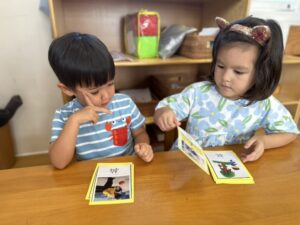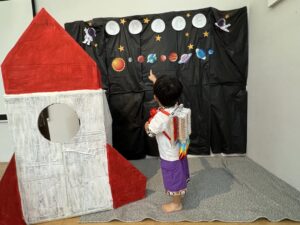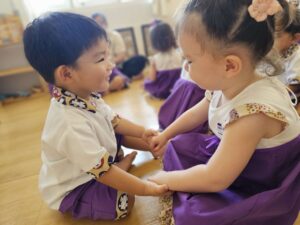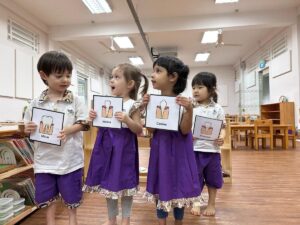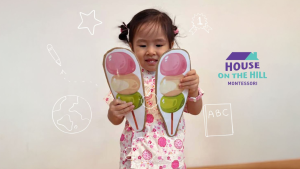At House on the Hill, the children recently embarked on an exciting journey into the world of maps. Guided by our dedicated Teachers, they delved into understanding map keys, symbols, and even took the creative step of drawing their own maps. This interactive approach allowed them to quickly and enjoyably grasp these essential concepts, deepening their spatial thinking, geographical understanding, and problem-solving skills.
By engaging with maps, they not only learned about geography but also developed valuable cognitive skills. Hands-on activities like these make abstract concepts more tangible and fun, which can greatly enhance learning and retention.
Enhancing map skills with your child can be both fun and educational. Here are some effective ways to do so:
1. Read a Map Book
Storytelling is a fantastic way to introduce children to map skills, combining education with entertainment. Here are three book recommendations that effectively incorporate map skills into engaging narratives:
- “Mapping Sam” by Joyce Hesselberth
Follow the adventures of Sam, a curious cat, as she explores her neighbourhood and beyond, using different types of maps. This book introduces children to various mapping concepts, from neighbourhood maps to more abstract maps like constellations.
- “Me on The Map” by Joan Sweeney
This book takes children on a journey from their bedroom to their house, street, town, and beyond. It provides a clear and relatable introduction to maps and how they represent different scales of the world.
- “Follow that Map! A First Book of Mapping Skills” by Scot Ritchie
A group of friends sets out on a treasure hunt, using maps to find clues and solve problems along the way. This book is filled with practical exercises and examples that teach basic map skills in an interactive manner.
2. Step-by-Step Guide to Teaching Map Skills
One effective way to help your child learn map skills is by familiarising them with various types of maps. Discuss how different areas relate to each other, helping them understand their immediate environment and the connections between various locations. This exercise makes them excited about using maps and shows how maps help in planning and exploration.
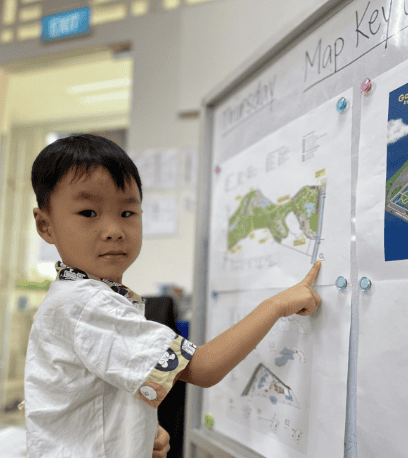
- Start with the MRT System Map
- Introduce the Map: Show them the MRT system map and explain how it represents the train lines and stations.
- Station Names: Teach them how to read station names and recognise symbols for different lines.
- Routes and Transfers: Explain how to identify routes and understand where to transfer between lines.
- Practical Exercise: Plan a trip using the MRT map. Ask them to figure out the best route from one station to another.
2. Use a Simple Map of Singapore
- Identify Familiar Places: Point out key locations such as your home, their school, favourite parks, and other familiar spots.
- Relate Areas: Discuss how these places relate to each other. For example, how far is the school from home, and which direction is it?
- Create a Personal Map: Have them draw a simple map that includes their home, school, and favourite places.
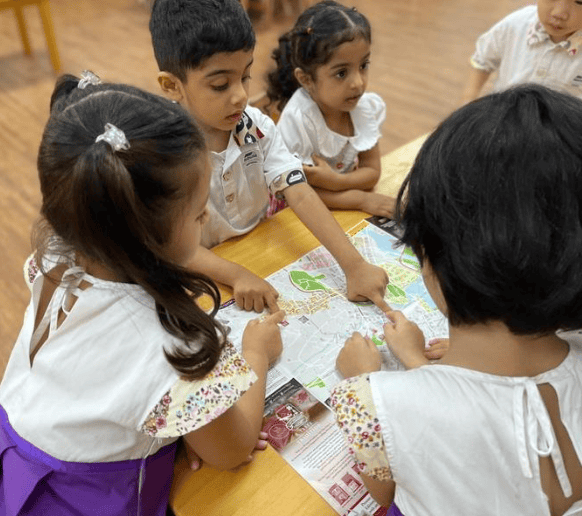
3. Explore Maps of Tourist Attractions
- Zoo or Amusement Park Maps: Use maps of popular attractions like the zoo or an amusement park.
- Plan a Visit: Plan a visit together using the map. Discuss how to navigate the attraction, find different exhibits or rides, and plan a route.
- Engage with Landmarks: Encourage them to look for landmarks on the map and find them in the real world during the visit.

3. Mapping their House or Play Area
Mapping familiar surroundings like their home or play area is an excellent way for children to grasp the concept of maps. This activity is not only engaging but also makes mapping personal and relatable. Here’s how to guide your child through the process:
- Explore the Area
- Walk Around Together: Take a tour of your house or play area with your child. Point out key features like rooms, furniture, doors, and windows.
- Discuss Observations: Encourage your child to observe and note down important details about the layout and key features.
- Draw a Simple Layout
- Start with Paper and Pencil: On a blank sheet of paper, help your child draw a basic layout of the area they explored.
- Identify Key Features: Mark the locations of rooms, furniture, doors, and windows. Ensure the layout is simple and easy to understand.
- Convert the Layout into a Map
- Introduce Map Symbols: Explain how to use symbols to represent different objects. For example, a rectangle can represent a bed, a square for a table, and lines for walls.
- Draw the Map: Guide your child in drawing the map, using the layout they created. Include symbols and ensure everything is proportionate.
- Label The Map: Help them label rooms and important spots, like “Living Room,” “Bedroom,” “Kitchen,” etc. Use simple and clear writing.
4. Map Puzzle Activity
Creating a map puzzle is an excellent hands-on activity that combines creativity with learning, helping children develop spatial awareness and understand geographical locations.
As they piece together different parts of the map, they learn about the relative positions of countries, states, or landmarks. Here’s a guide on how to create your own map puzzle.
Here’s how:
- Buy a blank puzzle from a dollar store and let your child draw a map on the back. It could be a map of their house, neighbourhood, or even an imaginative world they create
- Once the drawing is complete, mix up the pieces
- Have them put it back together
Tips for Engaging with Maps
- Start Simple
- Begin with basic maps and gradually introduce more complex ones as they become comfortable.
- Make it Fun
- Use games, puzzles, and interactive apps to make learning about maps enjoyable.
- Incorporate into their Daily Life
- Use maps in everyday activities, such as planning a family outing or finding a new restaurant.
- Encourage Questions
- Foster a curious mindset by encouraging questions about maps and geographical features.
By integrating maps into your child’s daily life and making the learning process engaging, you can help them develop essential skills that will benefit them throughout their lives.

